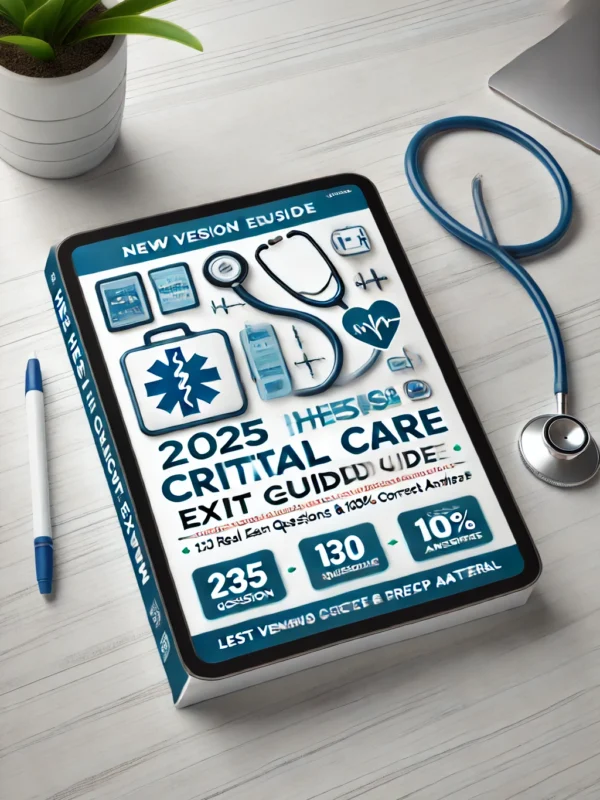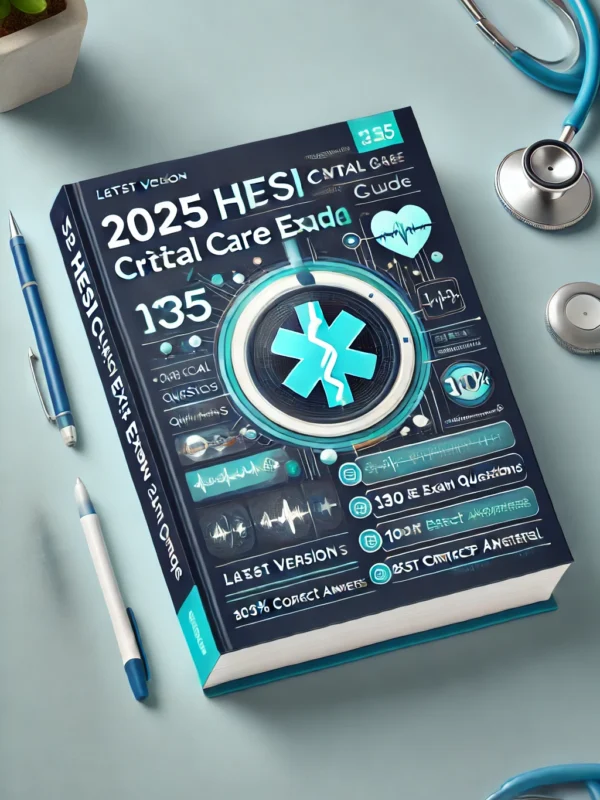-
70 real exam questions with verified answers
-
Next Generation NCLEX (NGN)-style scenarios for critical thinking
-
Detailed rationales for each question to ensure concept mastery
-
Updated 2025 content covering patient care and health assessment
-
Timed practice questions to simulate real exam conditions
-
A+ graded feedback to boost confidence and performance
-
Ideal for nursing students preparing for ATI and NCLEX exams
Preview
1. A nurse is admitting a client who has tuberculosis. Which of the following types
of transmission precautions should the nurse plan to initiate?
• A. Droplet
• B. Airborne ✅
• C. Protective environment
• D. Contact
Correct Answer: B. Airborne
Rationale: Tuberculosis is transmitted via airborne particles; therefore, airborne
precautions (including a negative-pressure room and N95 mask) are necessary to
prevent the spread.
2. A nurse in a well-child clinic receives a telephone call from a parent who states
that their child accidentally swallowed paint thinner. The child is awake and alert.
Which of the following responses should the nurse make?
• A. Have your child drink one large glass of water ✅
• B. Hang up and call a poison control center hotline
• C. Bring your child into the clinic later today
• D. Induce vomiting in your child with syrup of ipecac
Correct Answer: A. Have your child drink one large glass of water
Rationale: For hydrocarbon ingestion like paint thinner, dilution with water may be
appropriate while awaiting emergency services. Vomiting is contraindicated due to
aspiration risk.
3. A nurse is documenting a client’s medical record. Which of the following entries
should the nurse record?
• A. Oral temperature slightly elevated at 0800
• B. Administered pain medication ✅
• C. Incision without redness or drainage
• D. Drank adequate amounts of fluid with meals
Correct Answer: B. Administered pain medication
Rationale: Documentation should be specific and factual. “Administered pain
medication” is clear and meets legal documentation standards.
4. A nurse is providing oral care for a client who is unconscious. Which of the
following actions should the nurse take?
• A. Place the client in a side-lying position ✅
• B. Brush the client’s teeth daily
• C. Apply mineral oil to the client’s lips
• D. Rinse the client’s mouth with an alcohol-based mouthwash
Correct Answer: A. Place the client in a side-lying position
Rationale: Placing an unconscious client on their side prevents aspiration during oral
care.
5. A nurse is collaborating with a risk management team about potential legal
issues involving client care. Which of the following situations is an example of
negligence?
• A. A nurse administers a medication without first identifying the client
• B. An assistive personnel discusses client care in the facility cafeteria with
visitors present
• C. A nurse begins a blood transfusion without obtaining consent ✅
• D. An assistive personnel prevents a client from leaving the facility
Correct Answer: C. A nurse begins a blood transfusion without obtaining consent
Rationale: Performing a procedure without informed consent is considered negligence
and a violation of client rights.












Reviews
There are no reviews yet.